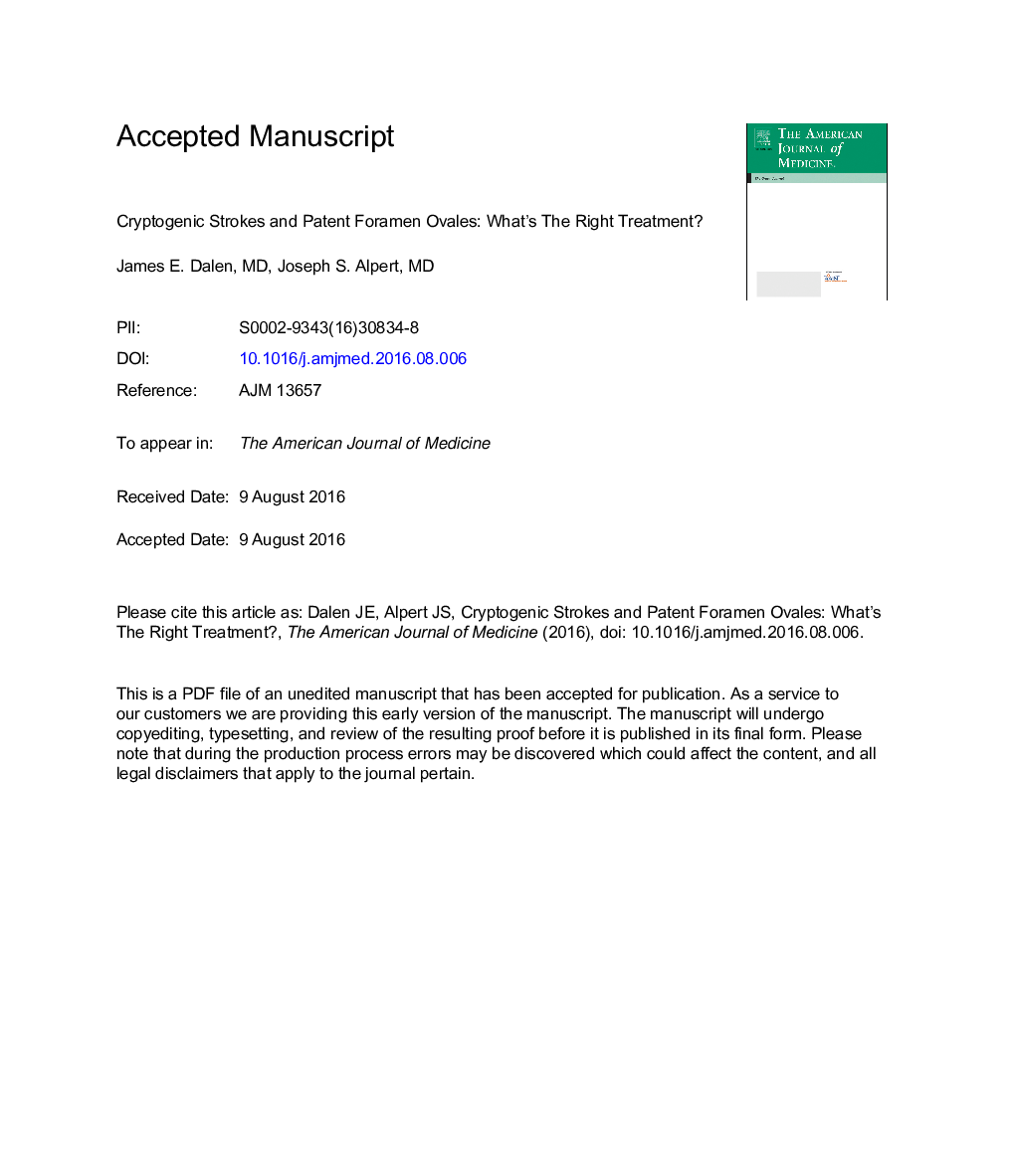| Article ID | Journal | Published Year | Pages | File Type |
|---|---|---|---|---|
| 5576894 | The American Journal of Medicine | 2016 | 12 Pages |
Abstract
More than 25% of all ischemic strokes per year are cryptogenic, that is, their cause is not determined after an appropriate evaluation. In 1988, it was reported that the incidence of a patent foramen ovale was 30 to 40% in young patients with a cryptogenic stroke compared with 25% in the general population. This led to the suspicion that cryptogenic strokes were due to paradoxical embolism, that is, a venous thrombus crossing a patent foramen ovale to enter the left atrium and then the arterial circulation. Few of the patients considered to have paradoxical embolism were shown to have coexistent venous thromboembolism. This suspicion of paradoxical embolism led to thousands of patients undergoing surgical closure of their patent foramen ovale. Surgical closure was replaced by closure of the patent foramen ovale by a variety of transvenous devices. Others recommended anticoagulant or antiplatelet therapy to prevent recurrent ischemic strokes. Three randomized clinical trials totaling more than 2000 patients compared closure of the patent foramen ovale with medical therapy. All 3 trials reported that closure of the patent foramen ovale provided no benefit compared with medical therapy. Subsequent trials have demonstrated no benefit of anticoagulation compared with antiplatelet therapy in patients with cryptogenic strokes with or without a patent foramen ovale. Patients with cryptogenic strokes should be evaluated for the presence of venous thromboembolism. If venous thromboembolism is present, treatment should be the same as for pulmonary embolism: anticoagulation. If venous thromboembolism is not present, antiplatelet therapy is indicated.
Related Topics
Health Sciences
Medicine and Dentistry
Medicine and Dentistry (General)
Authors
James E. MD, Joseph S. MD,
